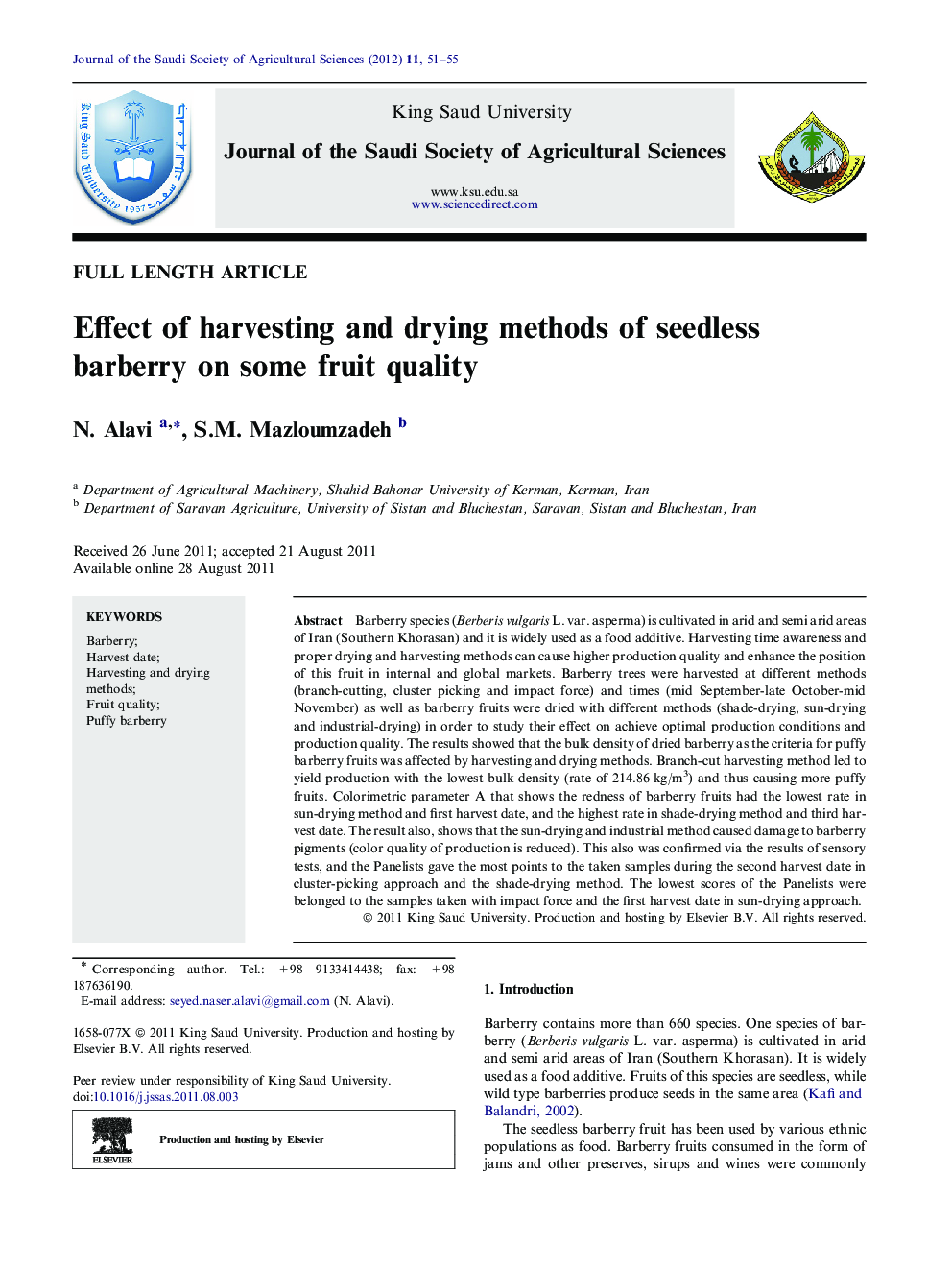| Article ID | Journal | Published Year | Pages | File Type |
|---|---|---|---|---|
| 4495708 | Journal of the Saudi Society of Agricultural Sciences | 2012 | 5 Pages |
Barberry species (Berberis vulgaris L. var. asperma) is cultivated in arid and semi arid areas of Iran (Southern Khorasan) and it is widely used as a food additive. Harvesting time awareness and proper drying and harvesting methods can cause higher production quality and enhance the position of this fruit in internal and global markets. Barberry trees were harvested at different methods (branch-cutting, cluster picking and impact force) and times (mid September-late October-mid November) as well as barberry fruits were dried with different methods (shade-drying, sun-drying and industrial-drying) in order to study their effect on achieve optimal production conditions and production quality. The results showed that the bulk density of dried barberry as the criteria for puffy barberry fruits was affected by harvesting and drying methods. Branch-cut harvesting method led to yield production with the lowest bulk density (rate of 214.86 kg/m3) and thus causing more puffy fruits. Colorimetric parameter A that shows the redness of barberry fruits had the lowest rate in sun-drying method and first harvest date, and the highest rate in shade-drying method and third harvest date. The result also, shows that the sun-drying and industrial method caused damage to barberry pigments (color quality of production is reduced). This also was confirmed via the results of sensory tests, and the Panelists gave the most points to the taken samples during the second harvest date in cluster-picking approach and the shade-drying method. The lowest scores of the Panelists were belonged to the samples taken with impact force and the first harvest date in sun-drying approach.
